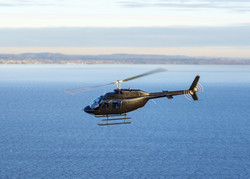New wind tunnel tests on rotorcraft parts
Given the continuous growth of helicopter share in air traffic, its aerodynamic drag has attracted great attention. The GRC2 is part of the Clean Sky initiative focusing, amongst other research areas, on reducing drag of helicopter airframe and non-lifting rotating parts. Optimising the design of these parts is an essential step towards developing efficient, low-emission helicopters. Scientists within the ROD(opens in new window) (Rotorcraft drag reduction) project produced the helicopter model that was used in the wind tunnel tests in both the original and the optimised configuration. Although some parts were delivered by the GRC2, the model required a completely new internal structure. This included the rotor hub driving system with the swashplate for the blade pitch control. The model can be installed on the wind tunnel pylon in an upside-down or an upright position. The former allows studying the effect of devices that lie on the lower surface of the fuselage, such as the vortex generators. The latter allows evaluating helicopter performance, including the rotor hub. Several configurations at different angle of attack and side-slip were tested to assess the aerodynamic performance of helicopter components. Moreover, a custom designed set-up was used to perform several stereo particle image velocimetry (PIV) as well as static pressure measurements in the regions just after the back ramp and just before the fin. Pressure measurements on steady and unsteady flows at the back ramp region proved useful for physical interpretation of vortex generator array functioning. Results from static pressure measurements confirmed that the vortex generators reduce drag as predicted by the calculations by increasing the pressure field and limiting the suction effect responsible for pressure drag. The smaller counterrotating vortex generator array provided the greatest drag reduction. Scientists also performed PIV measurements in the fin region to investigate possible tail-shake effects of the different optimised hub caps. Results indicated that these hub caps do not sufficiently deflect the wake turbulence to avoid collision with the fin. Pressure fluctuations around the fin provided interesting information about the unsteadiness of the rotor hub wake for the different hub caps tested. Aerodynamic drag is a key factor affecting helicopter range, performance and fuel consumption. Wind tunnel testing of components avoids or minimises the time, cost and risk of in-flight testing while also leading to better designs.




